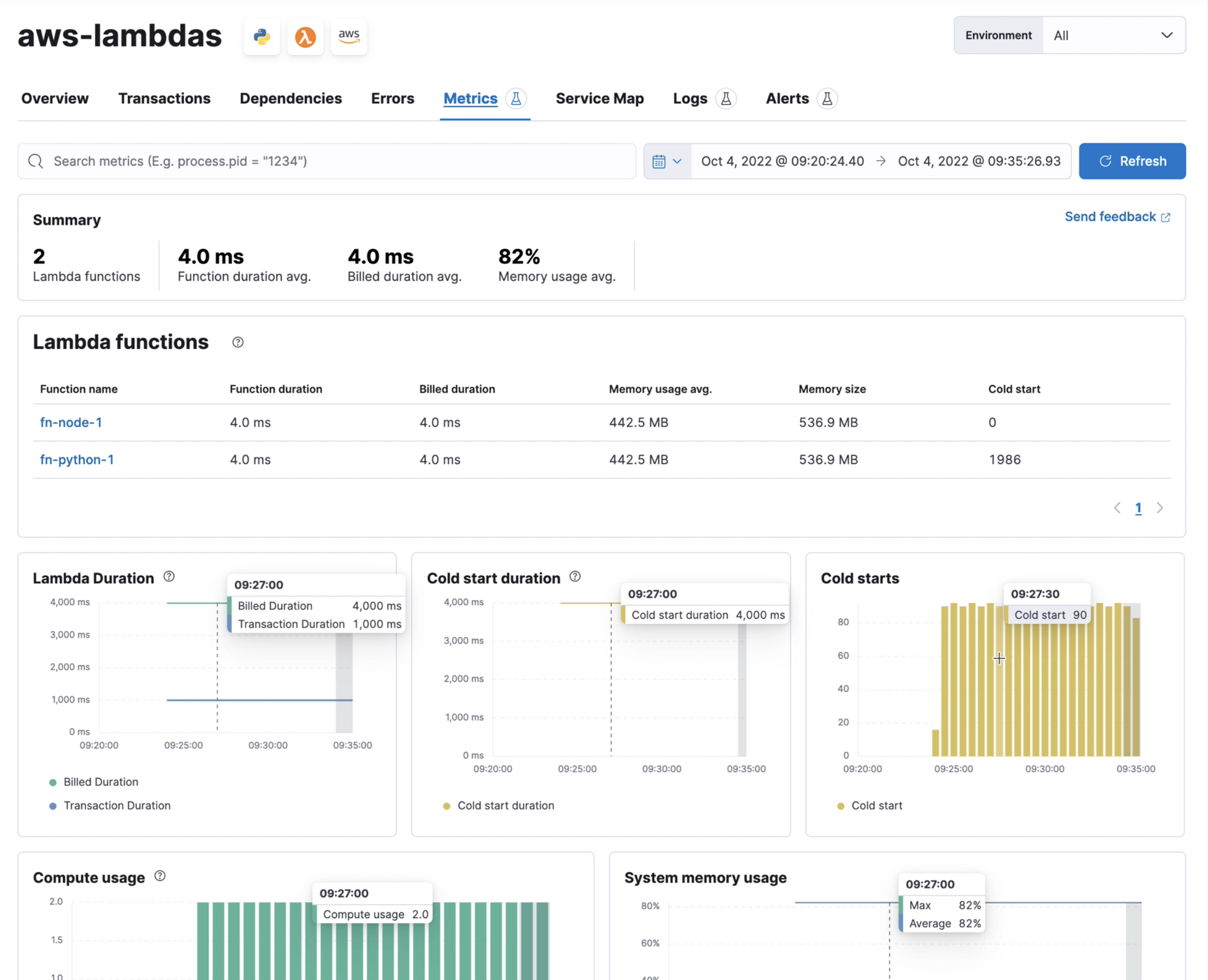- Elastic Cloud Serverless
- Elasticsearch
- Elastic Observability
- Get started
- Observability overview
- Elastic Observability Serverless billing dimensions
- Create an Observability project
- Quickstart: Monitor hosts with Elastic Agent
- Quickstart: Monitor your Kubernetes cluster with Elastic Agent
- Quickstart: Monitor hosts with OpenTelemetry
- Quickstart: Unified Kubernetes Observability with Elastic Distributions of OpenTelemetry (EDOT)
- Quickstart: Collect data with AWS Firehose
- Quickstart: Send data to the Elastic Cloud Managed OTLP Endpoint
- Get started with dashboards
- Applications and services
- Application performance monitoring (APM)
- Get started with traces and APM
- Learn about data types
- Collect application data
- View and analyze data
- Act on data
- Use APM securely
- Reduce storage
- Managed intake service event API
- Troubleshooting
- Synthetic monitoring
- Get started
- Scripting browser monitors
- Configure lightweight monitors
- Manage monitors
- Work with params and secrets
- Analyze monitor data
- Monitor resources on private networks
- Use the CLI
- Configure a Synthetics project
- Multifactor Authentication for browser monitors
- Configure Synthetics settings
- Grant users access to secured resources
- Manage data retention
- Scale and architect a deployment
- Synthetics Encryption and Security
- Troubleshooting
- Visualize OTLP data
- Application performance monitoring (APM)
- Infrastructure and hosts
- Logs
- Inventory
- Incident management
- Data set quality
- Observability AI Assistant
- Machine learning
- Reference
- Get started
- Elastic Security
- Elastic Security overview
- Security billing dimensions
- Create a Security project
- Elastic Security requirements
- Elastic Security UI
- AI for Security
- Ingest data
- Configure endpoint protection with Elastic Defend
- Manage Elastic Defend
- Endpoints
- Policies
- Trusted applications
- Event filters
- Host isolation exceptions
- Blocklist
- Optimize Elastic Defend
- Event capture and Elastic Defend
- Endpoint protection rules
- Identify antivirus software on your hosts
- Allowlist Elastic Endpoint in third-party antivirus apps
- Elastic Endpoint self-protection features
- Elastic Endpoint command reference
- Endpoint response actions
- Cloud Security
- Explore your data
- Dashboards
- Detection engine overview
- Rules
- Alerts
- Advanced Entity Analytics
- Investigation tools
- Asset management
- Manage settings
- Troubleshooting
- Manage your project
- Changelog
Observe Lambda functions
editObserve Lambda functions
editElastic APM provides performance and error monitoring for AWS Lambda functions. See how your Lambda functions relate to and depend on other services, and get insight into function execution and runtime behavior, like lambda duration, cold start rate, cold start duration, compute usage, memory usage, and more.
To set up Lambda monitoring, refer to AWS Lambda functions.

Cold starts
editA cold start occurs when a Lambda function has not been used for a certain period of time. A lambda worker receives a request to run the function and prepares an execution environment.
Cold starts are an unavoidable byproduct of the serverless world, but visibility into how they impact your services can help you make better decisions about factors like how much memory to allocate to a function, whether to enable provisioned concurrency, or if it’s time to consider removing a large dependency.
Cold start rate
editThe cold start rate (i.e. proportion of requests that experience a cold start) is displayed per service and per transaction.
Cold start is also displayed in the trace waterfall, where you can drill-down into individual traces and see trace metadata like AWS request ID, trigger type, and trigger request ID.
Latency distribution correlation
editThe latency correlations feature can be used to visualize the impact of Lambda cold starts on latency—just select the faas.coldstart field.
AWS Lambda function grouping
editThe default APM agent configuration results in one APM service per AWS Lambda function, where the Lambda function name is the service name.
In some use cases, it makes more sense to logically group multiple lambda functions under a single
APM service. You can achieve this by setting the ELASTIC_APM_SERVICE_NAME environment variable
on related Lambda functions to the same value.